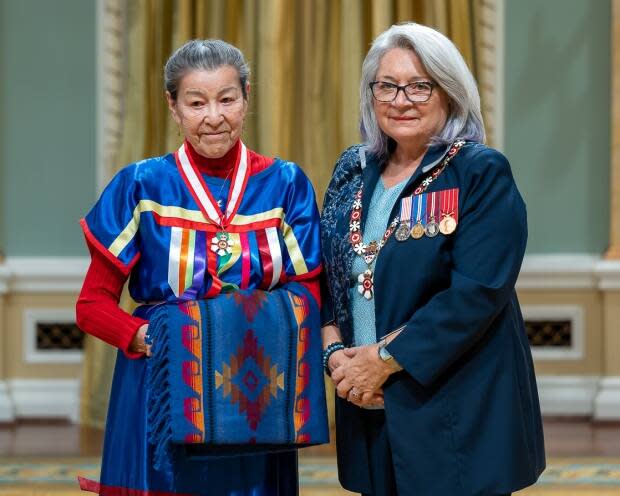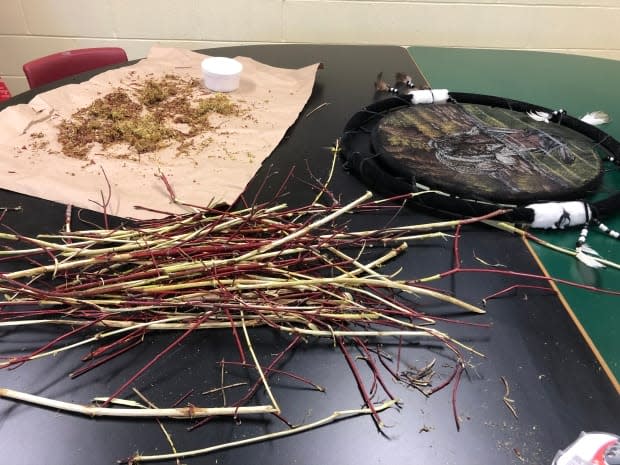Improve health of Indigenous people and culture by decolonizing tobacco, says Cree doctor

High rates of smoking among Indigenous people not only pose serious risks to personal health, but also culture, according to a Cree (nehiyô) doctor in Alberta.
"The number one way that we can ensure people are healthy is to stop smoking," according to Dr. James Makokis, who is from the Saddle Lake Cree Nation and works in Kehewin Cree Nation and south Edmonton.
First Nations people off reserve are almost twice as likely to smoke as non-Indigenous people, according to Public Heath Canada. According to a 2016 report, half of First Nations men (50 per cent) and women (49 per cent) living on reserve in Ontario reported smoking daily or occasionally.
Makokis said he's seen many patients who have smoked since they were preteens and are now coping with a variety of health problems. He said communities must engage respectfully with elders about smoking.
"The younger generation needs our elders to be living to healthy ages, to be able to transfer that knowledge around language, around culture, around spirituality, around medicines [and] around songs and ceremonies, so that when they get older they have all of the tools to ensure that continuity of knowledge into the future," he said.
Culturally appropriate services needed
Elder Doreen Spence from Saddle Lake Cree Nation said tobacco was traditionally used by Cree people in ceremony — in a sacred fire or as an offering to the earth.
"At the beginning of time we were gifted with tobacco. Tobacco is a sacred herb," Spence said.
At age 86, she still sometimes grows the plants in small containers but she only uses the medicine for ceremonial purposes.
Spence said tobacco has been misused and it's important to understand how and why that happened.

Traditional use of tobacco usually involves minimal inhalation, according to research from the University of Saskatchewan.
"When we look at the instrument that we use to smoke tobacco, people in our teachings are not generally to inhale the medicine, but kind of just smoke it," Makokis said.
But as commercial tobacco entered communities, it became confused with traditional use of tobacco, he added.
"Within our communities there is the misperception that if you are smoking you're engaging in some form of prayer because it's a medicine," he said.
Spence agrees and said a better understanding of ceremony and Indigenous people's place in the cycle of life is essential to lowering smoking rates.
Programs to reduce smoking
Government programs have helped to reduce smoking rates since the '70s but with Indigenous smoking rates still higher than for non-Indigenous people, Makokis said there's a need for culturally-specific programs.
CBC News reached out to Alberta Health Services to find out what resources are available to reduce smoking among Indigenous people, but did not hear back by the time of publication.

Such programs should address tobacco use in a culturally respectful and trauma-informed way, Makokis said. That should include understanding how addiction is often connected to trauma, and Makokis highlighted specific sources of trauma, like the '60s Scoop and residential schools.
"When we look at the tremendous amount of trauma that Indigenous peoples have experienced through colonial violence, we know that they're more predisposed to regulating their emotions… by misusing substances, whether that is alcohol or drugs," Makokis said.
Vaping also a concern
Makokis said he's also worried about young people and vaping. Like with smoking, Indigenous youth are more likely to vape than non-Indigenous youth.
A 2022 report from Statistics Canada estimated that in 2019, 31 per cent of Indigenous youth aged 15-17 had vaped in the last 30 days compared with 20 per cent of non-Indigenous youth.
Makokis said more must be done to help reduce the rates of smoking and vaping for young people, which includes better access to cultural services and activities.
"One of the number one protective factors for Indigenous youth in terms of preventing engaging in harmful activities is being connected with their culture, identity, language, ceremonies and spirituality," Makokis said.

